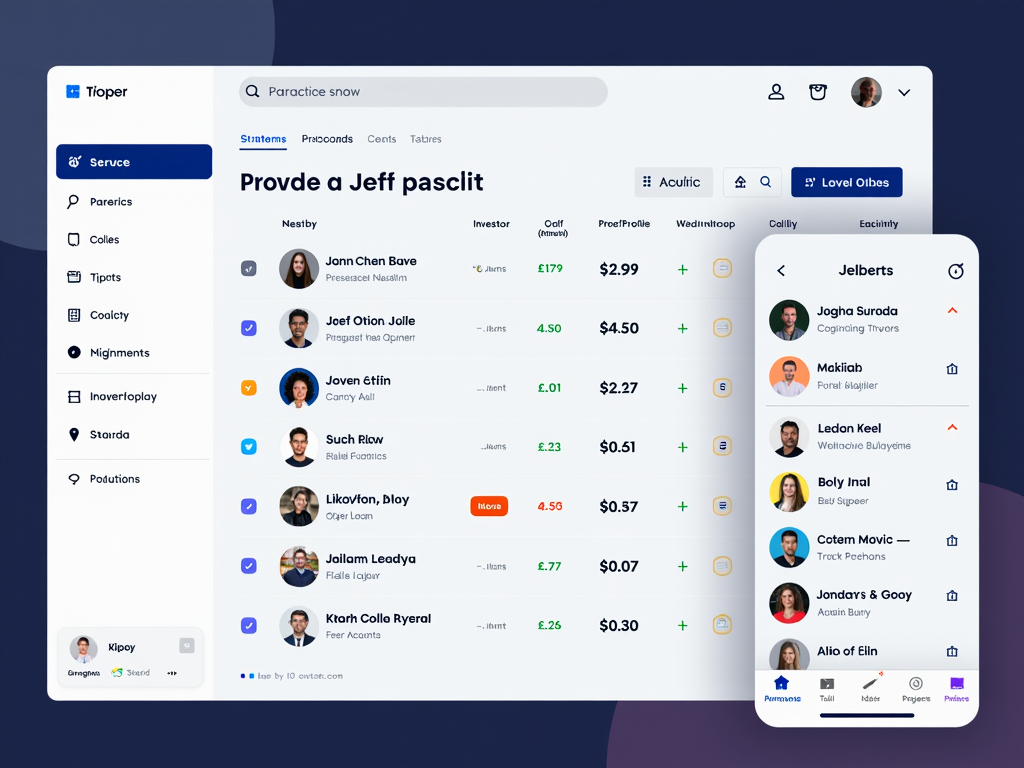In a world where financial freedom and flexibility are increasingly valued, peer-to-peer (P2P) lending offers a breath of fresh air for investors. These platforms allow investors to lend directly to borrowers and earn attractive interest rates. But how do these platforms work exactly, and what opportunities and risks do they entail? This article explores the mechanisms behind P2P loans and provides a clear overview of the advantages and disadvantages for investors.
P2P Lending Platforms: A New Dimension of Capital Intermediation

Peer-to-peer (P2P) lending platforms represent a revolutionary step in the financial world, directly connecting investors to borrowers without banks acting as intermediaries. These online platforms open up exciting opportunities for both investors and borrowers, which could durably change the landscape of lending.
The core of how P2P lending platforms operate lies in their role as intermediaries. They create a digital marketplace where borrowers can present their projects or funding needs, and investors can choose which loans or projects they wish to invest in. The platform plays a crucial role in risk management by conducting extensive creditworthiness checks on borrowers. This ensures that investors can make informed decisions while the borrower has the opportunity to secure their financing.
In terms of payment management, the platform ensures that repayments occur promptly and in full. Investors receive interest on their invested capital, which is often higher than traditional forms of investment. These attractive returns represent one of the main reasons why many investors choose P2P loans.
Another advantage is the ease of access to these platforms. Unlike the complex registration processes and high minimum requirements of traditional forms of investment, P2P platforms are characterized by simple registration and minimal investments, which can start from as little as 10 euros per loan. This allows for broad participation, even for small-scale investors who might otherwise be excluded from profitable investments.
However, it is also important to keep the risks in mind. The risk of default, or the possibility that a borrower does not meet their obligations, poses a real danger. In addition, there is no guarantee on deposits, as is often the case in the event of insolvency, which requires careful risk management by investors. This is compounded by regulatory uncertainty, as different platforms operate in different countries, often with variable regulations and protection mechanisms.
When choosing the right platform, investors should pay attention to whether it is regulated and if it offers buyback guarantees, which can reduce the risk of default. Also, portfolio diversification, which entails spreading invested capital across different loan projects, is a crucial step to dilute risks and increase the chances of stable returns. P2P platforms provide significant transparency, offering detailed information about borrowers and their projects, which supports informed investment decisions.
Investing in P2P Loans: Potential and Caution

P2P loans offer an intriguing investment opportunity, promising both high returns and diversification benefits. For investors looking to grow their money outside traditional avenues, this form of investment represents an attractive alternative. But before diving into the world of P2P loans, it is essential to carefully weigh both the opportunities and the risks.
A primary incentive for investors is the potentially high returns that P2P loans offer compared to traditional bank investments. Platforms like PeerBerry promise annual returns of up to 11.5%, while others, like HeavyFinance, can even reach 14%. This level of return generally exceeds the interest offered by traditional banking products. However, one must always be aware that higher returns come with greater risk.
Additionally, investing in P2P loans allows for broad portfolio diversification. Investors can distribute their capital across various types of loans and geographic areas, helping to reduce risk. This diversification helps mitigate the impact of a single default on the overall portfolio.
Another advantage offered by many platforms is some degree of liquidity. Since many P2P loans are short-term in nature, investors can access their invested capital more quickly than with other forms of investment. This is particularly advantageous in a volatile market context.
However, as appealing as the advertised advantages may seem, investors utilizing P2P loans also face significant risks. The risk of default is one of the most severe: if a borrower defaults, the invested amounts are at risk. Moreover, most platforms do not offer deposit guarantees, as is often the case with traditional banks, leading to a potential risk of financial loss in the event of platform insolvency.
Furthermore, many P2P platforms operate in legal gray areas, as some are not under the supervision of financial authorities. Therefore, investors should keep an eye on the regulatory context and carefully consider which provider to collaborate with.
A strategic approach to reducing risks in the P2P sector includes the targeted use of buyback guarantees, offered by many platforms. These guarantees obligate the platforms to buy back defaulted loans after a certain period, which can significantly reduce risk for investors.
In summary, investing in P2P loans offers a way to achieve attractive returns and diversify one’s portfolio but requires careful consideration of the risks and vigilance regarding which platforms to choose.